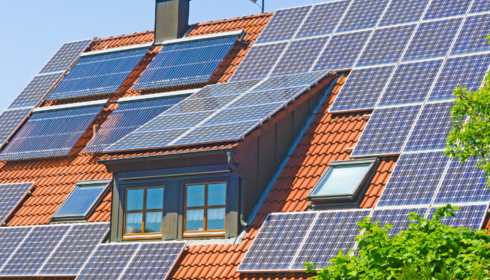Solar Rooftop System: A Smart Step Towards Sustainable Energy

In today’s era of rising electricity costs and growing environmental concerns, the solar rooftop system has emerged as an efficient and sustainable energy solution. With the world moving towards renewable energy, installing solar panels on rooftops is now a popular and practical choice for homeowners, businesses, and industries.
What is a Solar Rooftop System?
A solar rooftop system is a solar power generating unit installed on the rooftop of residential, commercial, or industrial buildings. It converts sunlight directly into electricity using photovoltaic (PV) panels. Unlike large solar farms that require significant land, rooftop systems utilize the already available space, making them highly space-efficient.
The main components of a solar rooftop system include solar panels, an inverter, mounting structures, cables, and a monitoring system. The inverter plays a critical role in converting the direct current (DC) produced by the solar panels into alternating current (AC) that can be used by household appliances and other electrical systems.
Types of Solar Rooftop Systems
There are generally two types of solar rooftop systems:
- Grid-Connected Solar Rooftop System:
This system is connected to the local electricity grid. It allows excess power generated by the solar panels to be fed back to the grid, which can be credited to your electricity bill. This process is known as net metering. - Off-Grid Solar Rooftop System:
This system is independent of the electricity grid and is typically used in remote areas where grid power is not available. It requires battery storage to store excess energy for use during nighttime or cloudy days.
Benefits of Solar Rooftop Systems
1. Significant Cost Savings
One of the most attractive benefits of a solar rooftop system is the reduction in electricity bills. By generating your own power, you can greatly decrease dependence on grid electricity. In many cases, the savings can cover the initial investment within a few years.
2. Eco-Friendly Energy
Solar energy is clean and green. By switching to solar, you help reduce greenhouse gas emissions and your carbon footprint. This makes a solar rooftop system a responsible choice for a sustainable future.
3. Government Incentives
Many governments offer financial incentives, tax benefits, and subsidies to promote solar energy. These can significantly lower the upfront cost of installing solar rooftop systems.
4. Low Maintenance
Once installed, solar rooftop systems require minimal maintenance. Cleaning the panels a few times a year and regular system checks are usually sufficient to keep them running efficiently for 25 years or more.
5. Increases Property Value
Homes and buildings equipped with solar rooftop systems are increasingly seen as high-value properties. Buyers are often willing to pay more for properties that offer long-term savings and sustainable energy solutions.
Factors to Consider Before Installation
Before installing a solar rooftop system, there are a few key factors to evaluate:
- Roof Condition and Space: Ensure your roof is structurally sound and has enough space for solar panels.
- Solar Potential: Consider the amount of sunlight your roof receives throughout the year.
- System Size: Choose the right system size based on your energy consumption.
- Quality of Components: Always opt for high-quality solar panels and inverters from trusted manufacturers.
- Certified Installers: Hiring a certified and experienced installer ensures the system is safely and efficiently installed.
Future of Solar Rooftop Systems
The adoption of solar rooftop systems is rapidly growing worldwide. With advancements in solar technology, the efficiency and affordability of these systems are improving year after year. Additionally, smart energy management systems and real-time monitoring make solar energy even more attractive to both residential and commercial users.




